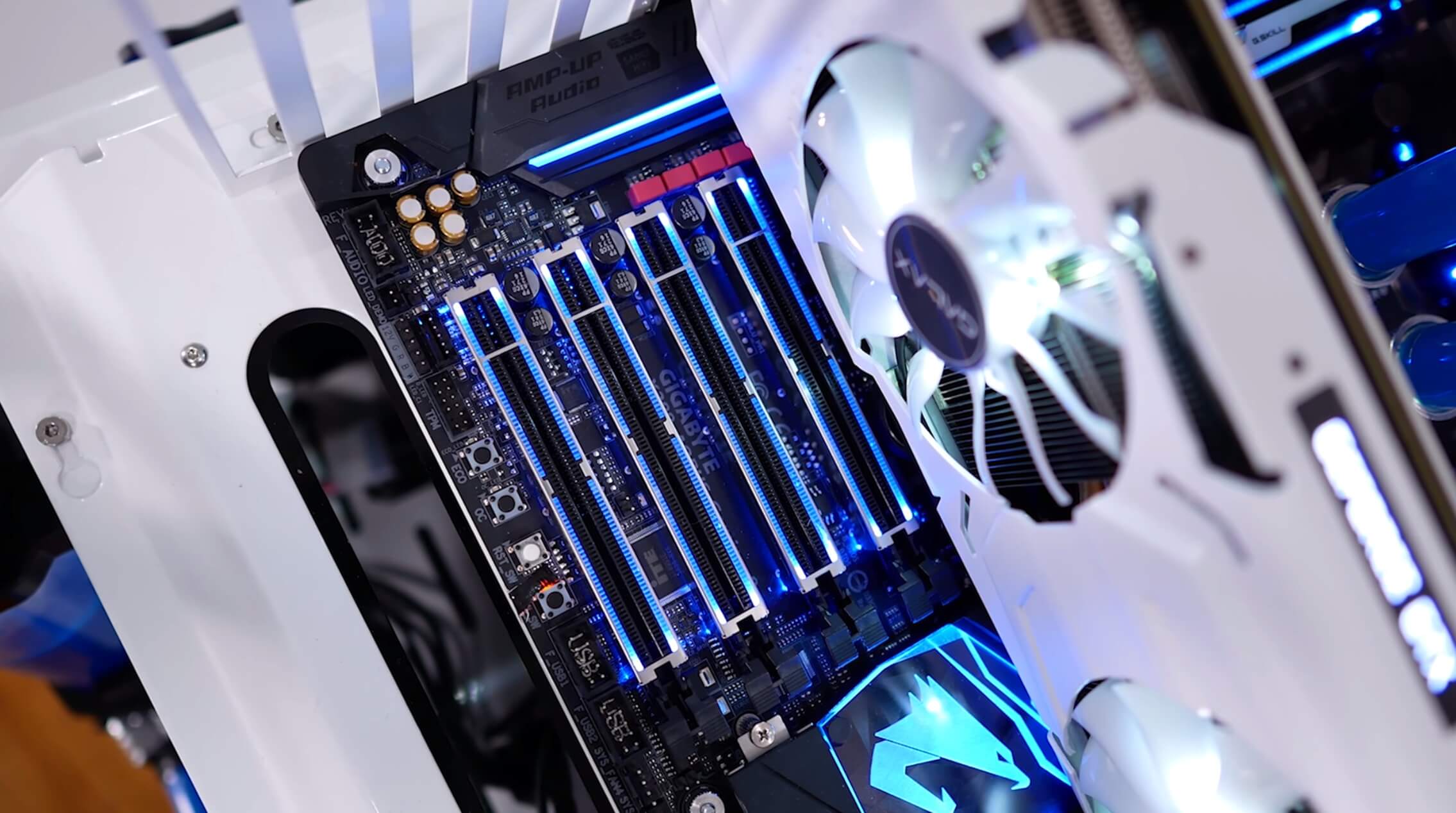Price vs. Performance & Conclusion
Here is a look at the average performance across the nine games tested, starting with the 720p results. These results look a lot like what we saw across most of the games tested, particularly in the DX11 titles, of which there were six.
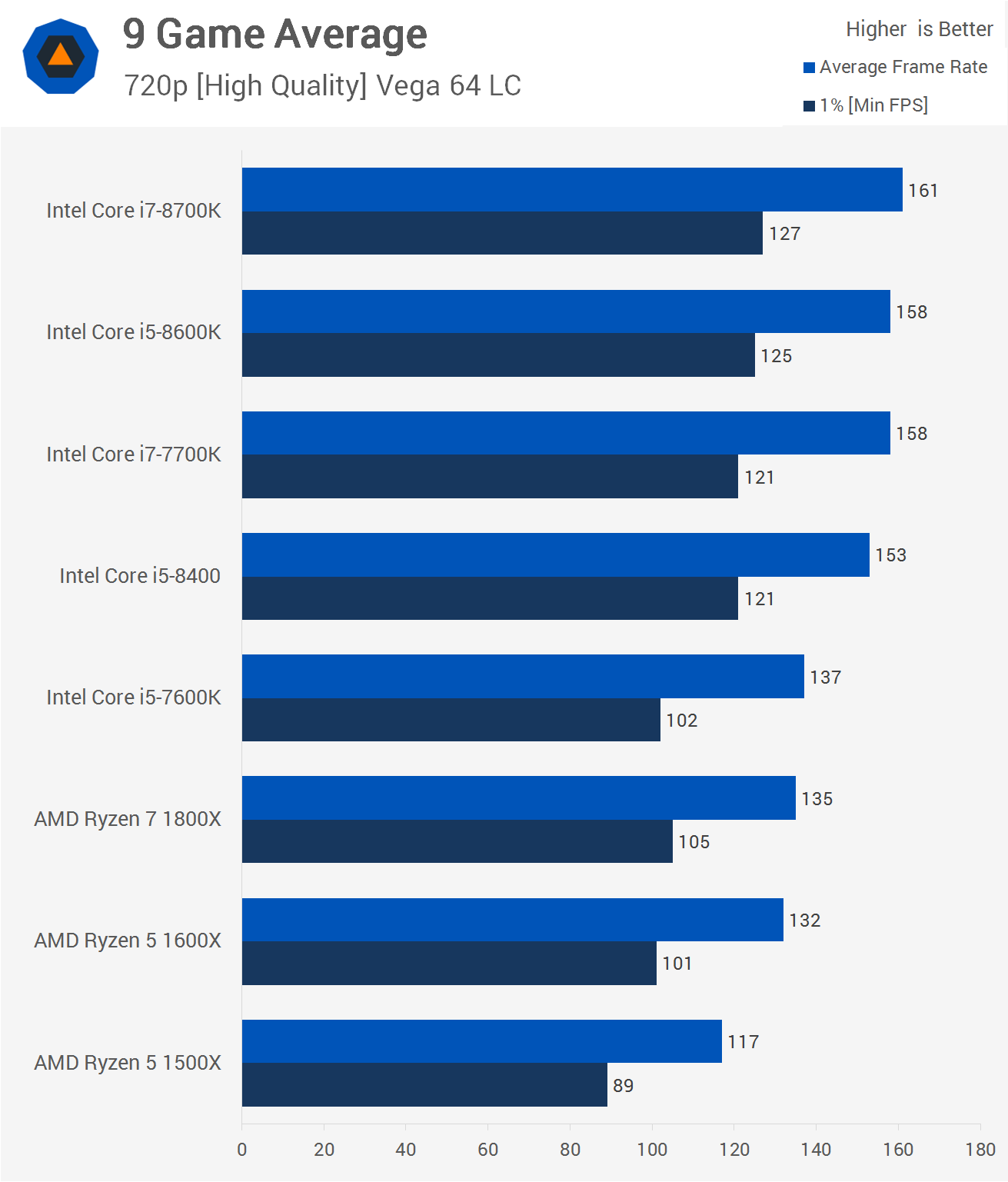
The Ryzen 5 1500X looks slow but it still delivered perfectly smooth performance in every title tested with over 60fps at all times. How does it stack up in terms of value, you ask?
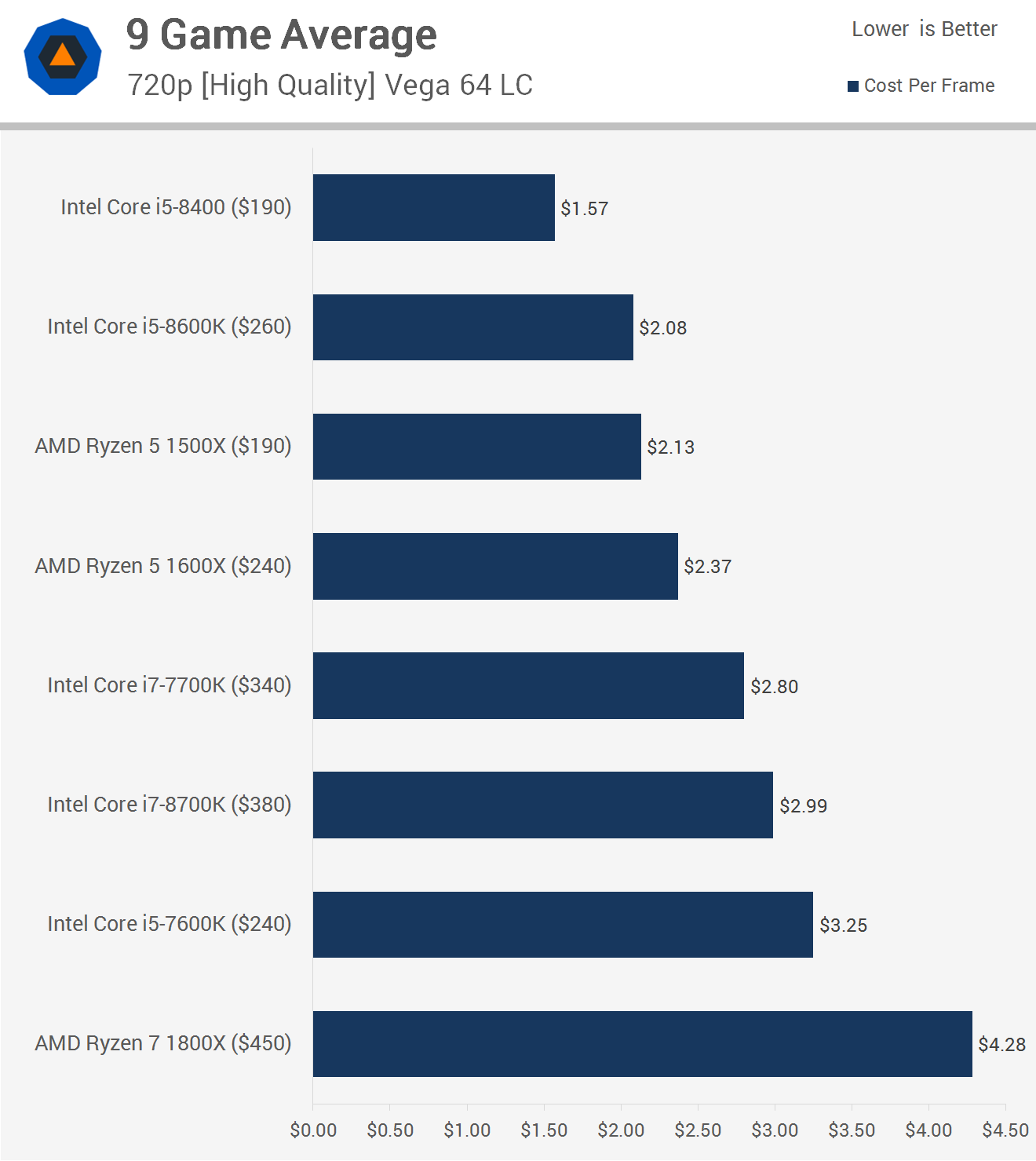
Before accounting for total platform expenses, the 1500X only delivers about the same bang for your buck as the Core i5-8600K, though the R5 1600 does beat out all the Core i7 CPUs.
What happens when you add the cost of a motherboard? Well let's take a look...
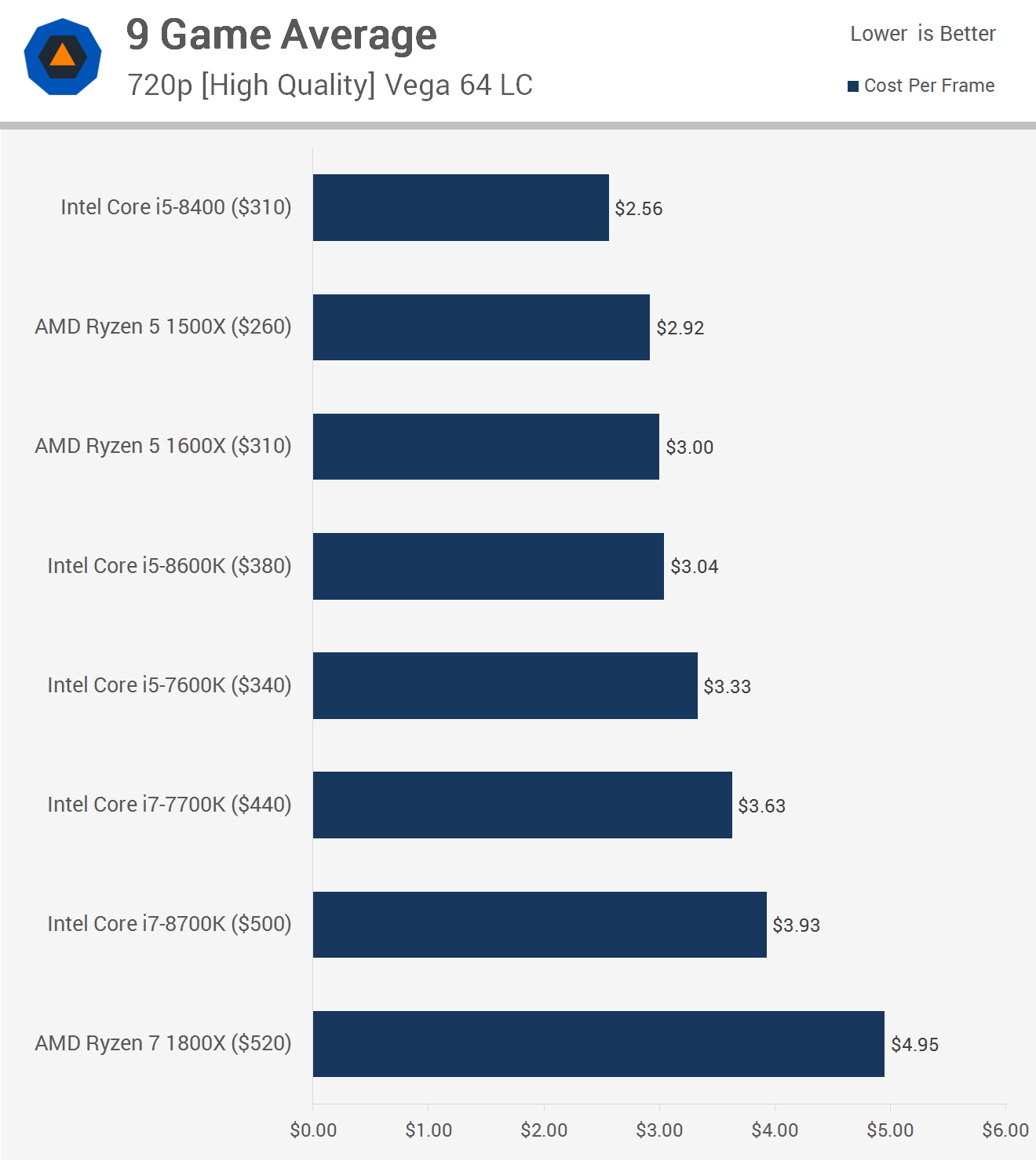
If we factor in the motherboard prices ($70 for a B350, $100 for a Z270 and $120 for a Z370), the 1500X not only edges out the Core i5-8600K, it also beats the R5 1600 by a bit. Intel's Core i5-8400, however, is the thorn in AMD's side, costing just $2.56 per frame based on our data.
Does that change at 1080p?
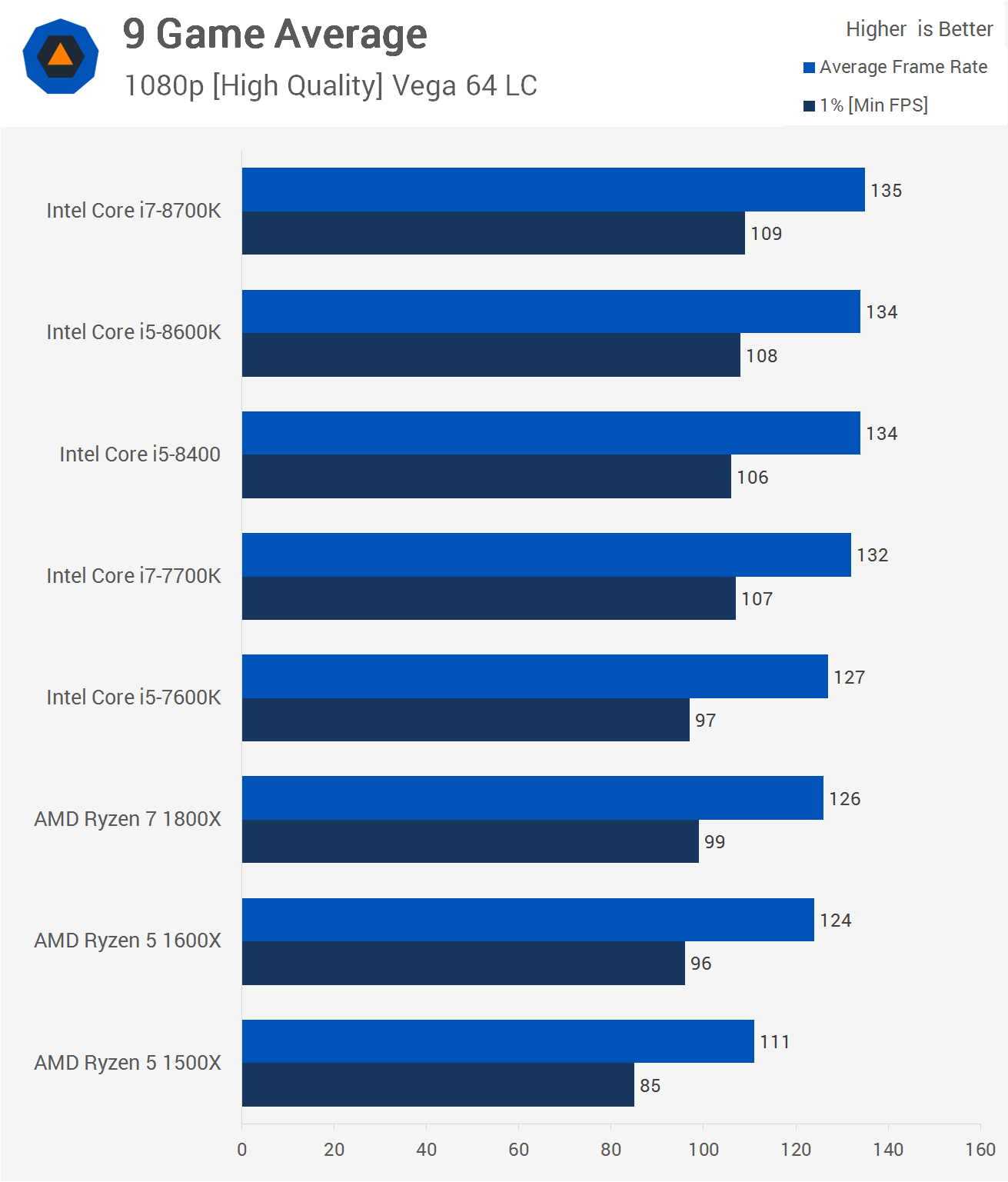
Compared to what we saw at 720p, the average frame rate margins have now closed up a little and Ryzen looks more competitive. Since most gamers play at 1080p, many of you are surely wondering what kind of bang for your buck you can expect here.

This time, accounting for just the CPU prices, we see that the R5 1500X is quite a bit more cost effective compared to the Core i5-8600K. While the 8600K whipped the 1600X at 720p, they deliver a similar level of value at 1080p.

As we include basic motherboard pricing, the 1500X closes in on the Core i5-8400 but once again Intel's new sub-$200 hexa-core processor is still the best thing out there right now in terms of value, coming in at 5% cheaper than the 1500X and 10% cheaper than the 1600X when calculating the cost per frame including motherboard prices.
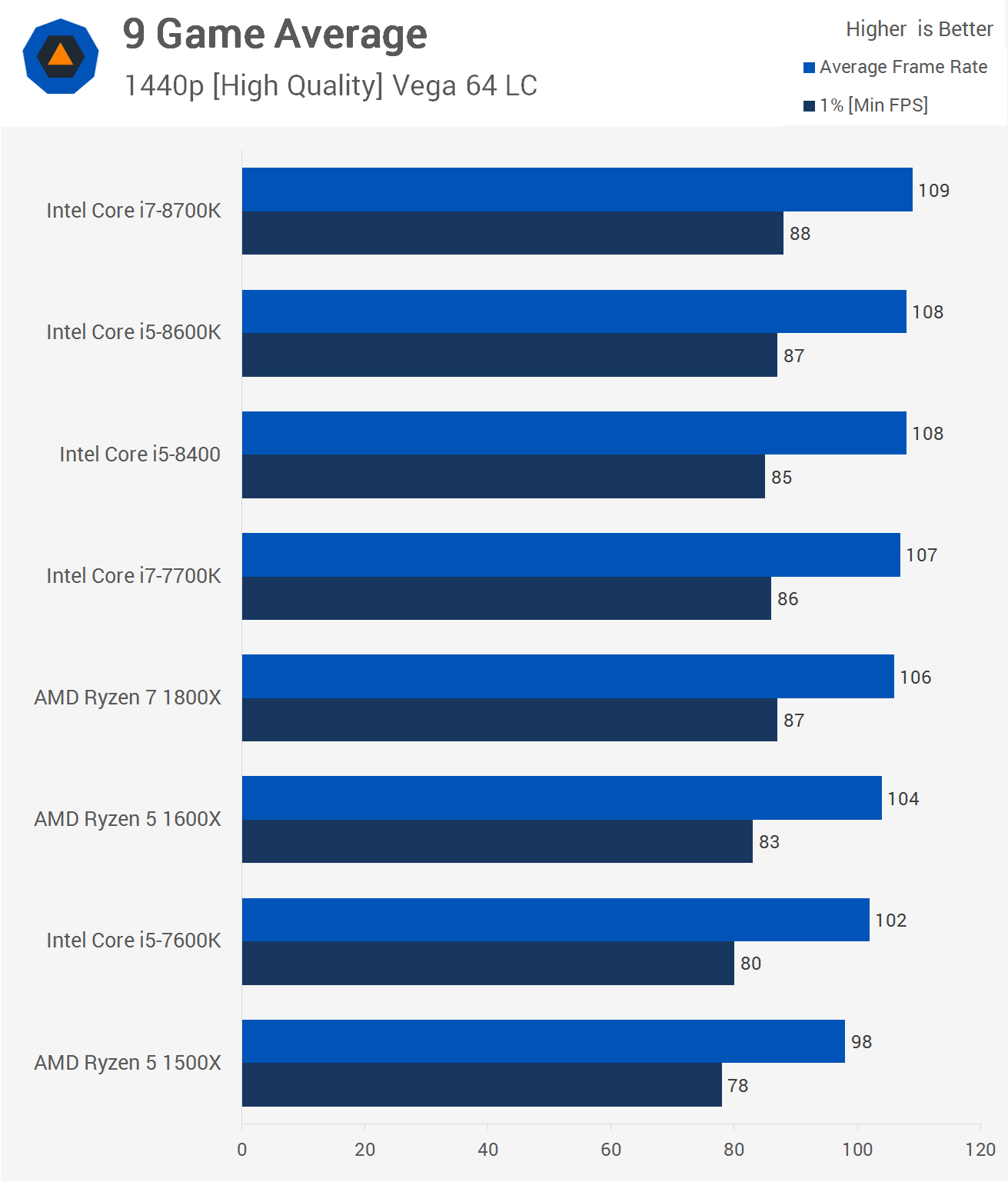
What about those who game at 1440p? Well here we can see that the playing field is pretty well leveled at this resolution. The slowest CPU tested, the R5 1500X, is only 10% slower than the fastest CPU tested, the 8700K.
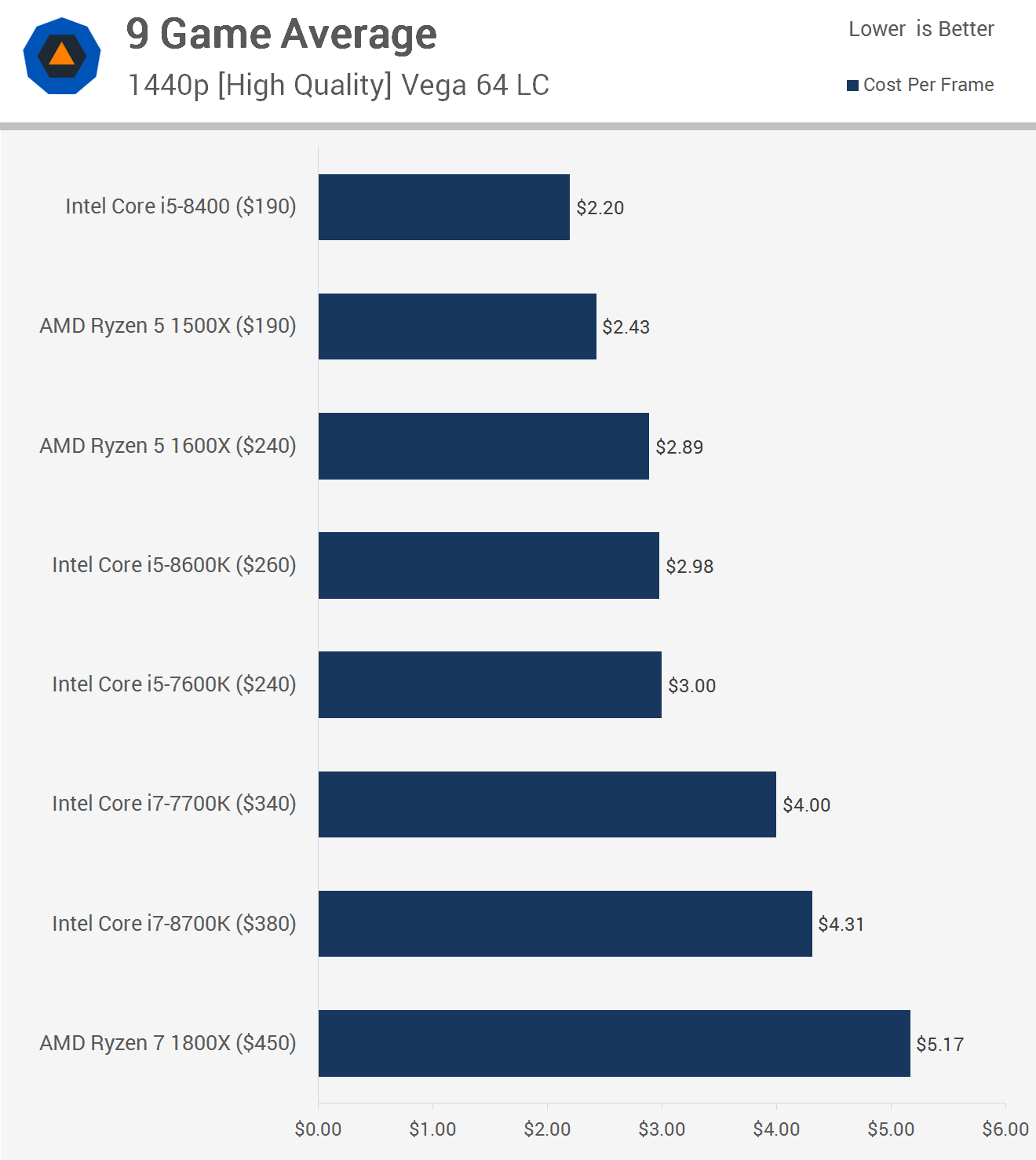
Even so, when we add pricing to the mix, the Core i5-8400 is still the value champ. At just $2.20 per frame, it's 9% more cost effective than the 1500X and 24% more cost effective than the 1600X.

Once we factor in motherboard pricing we see that for the first time a Ryzen CPU is able to beat the Core i5-8400 while the R5 1600X closes in. The R7 1800X is a bit of a lost cause for gaming but I'll discuss that a bit more in a moment.
Conclusion
Wrapping up with the 720p data first, these low-res results are important for a few reasons, though for some they can be a bit misleading. They're important because they show us the true difference between CPUs in these games. With any speed limits removed, this shows how fast they can go. In my opinion, this gives us a good indication of how future performance should look when using yet to be released high-end GPUs, such as the Titan XpX pX ;).
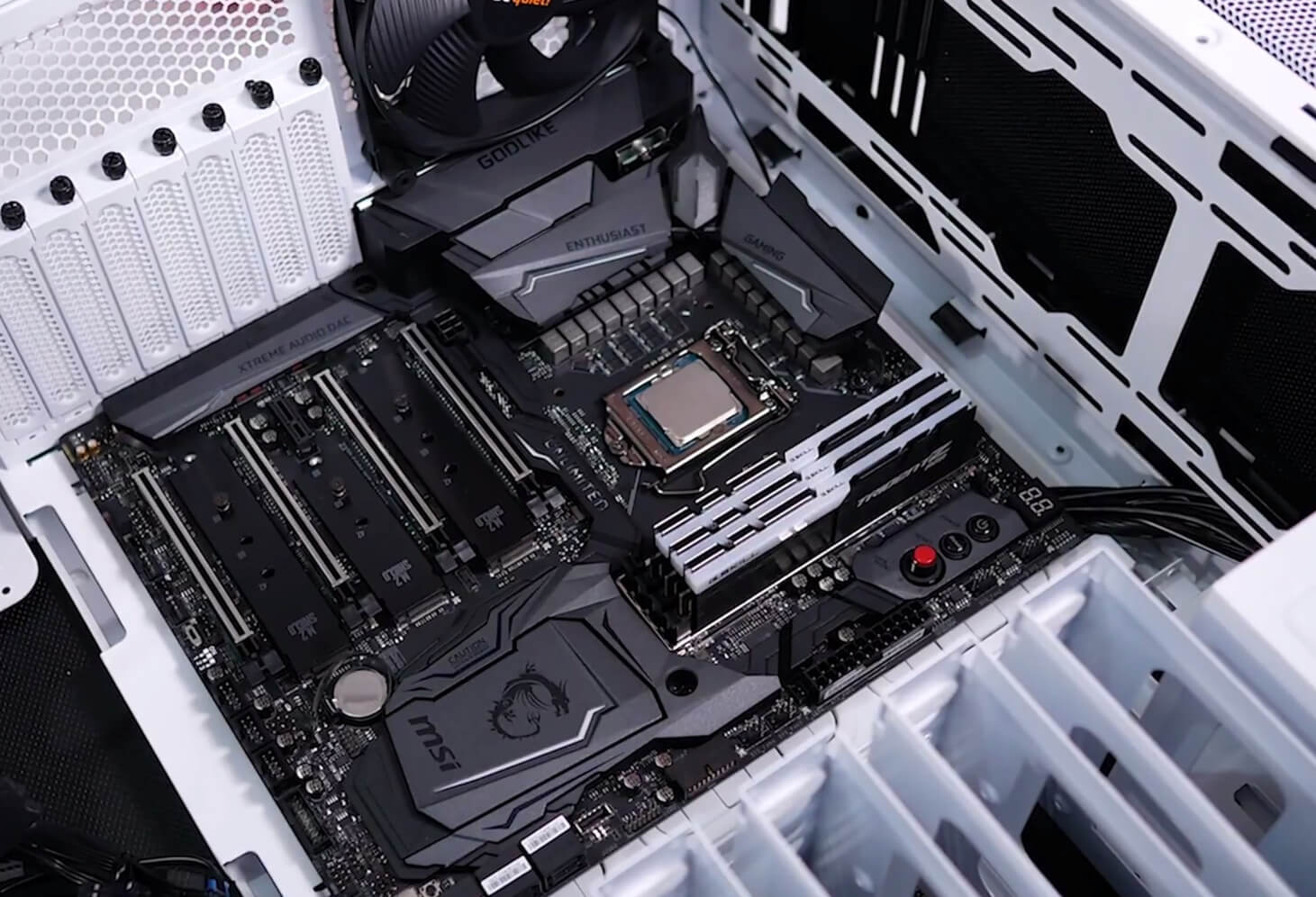
The fact that the Core i5-8600K was 24% faster than the Ryzen 5 1600 on average means that in the future when GPUs become faster and games become more demanding, the Intel CPU should stand up better and potentially last longer. We see a similar pattern when comparing the Core i7-2600K and FX-8350 in modern games, just to a much lesser degree as Ryzen is actually good and the FX-8350 is powered by eight hamsters in four wheels.
However, Ryzen works better in well-crafted DirectX 12 titles such as Civilization VI and Ashes of the Singularity, to cite an example. The issue though is that those kind of DX12 titles are still few and far between in late 2017. Should we see an influx of quality DX12 titles over the next few years, then this could change the future prediction of the 720p results shown here.
If you had to make a bet based currently available data, investing in the Z370 platform and getting the Core i5-8400 would probably be the safest route as it will look after you well right now. It also comes at a relatively low cost per frame and with six physical cores it's not going to become extinct any time soon. Even in the 1440p cost-per-frame data that includes motherboard pricing, we see that the 8400 costs 8% more than the four-core 1500X, but we'd rather have the six-core Core i5 for that small price premium.
Further up the food chain, the Core i5-8600K and 8700K are impressive but you're going to need an insane GPU configuration to see any real benefit over the 8400. The 1800X isn't the best value representation from the Ryzen 7 series either, but it does offer the best out of the box performance which is why I included it.
Our follow-up coverage to this article will include overclocking numbers and for that we'll use the much cheaper Ryzen 7 1700 overclocked to 4GHz. The R5 1600 will also step in for the 1600X and the 1500X will be replaced by the R5 1400. This is the real challenge facing Intel's Core i5-8400: for those willing to overclock, can Ryzen deliver more bang for your buck?
Well, we plan to find out soon.
Shopping shortcuts:
- Intel Core i7-8700K on Newegg
- AMD Ryzen 7 1800X on Amazon, Newegg
- AMD Ryzen 7 1700X on Amazon, Newegg
For now, if you're just looking for solid performance out of the box at a great price, the Core i5-8400 looks like the best bet. Ryzen is of course still a worthy alternative and for those gaming at 1440p with a GTX 1070 or Vega 56 graphics card, the difference between a Ryzen 5 CPU and the Core i5-8400 will be negligible. Which platform will prove to be the best investment over the next five years is anyone's guess.
